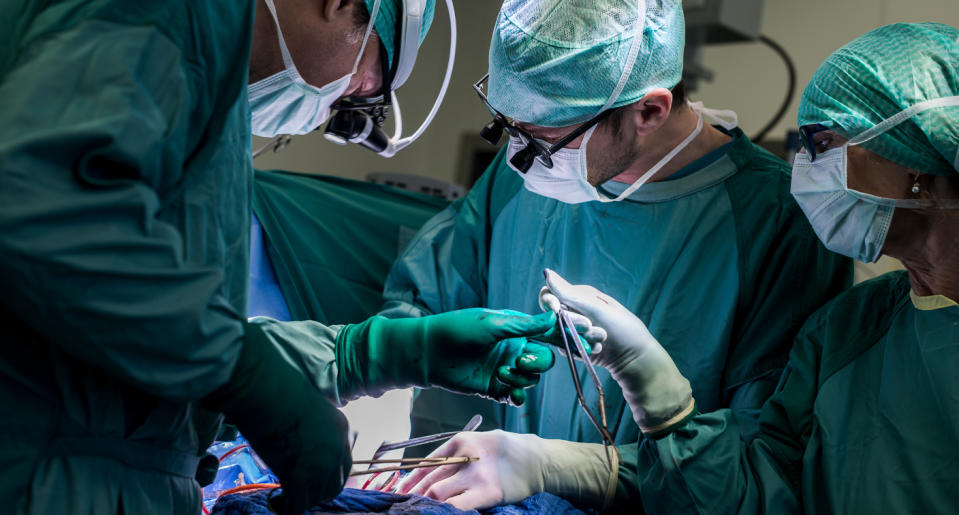Doctors perform first heart transplant of its kind on military veteran: ‘It’s a monumental leap forward’
Doctors at Duke University Hospital performed a first-of-its-kind heart transplant procedure, which could help increase the amount of donated hearts available and reduce wait times for people seeking the transplant.
The process — called donation after circulatory death (DCD) — was performed for the first time in the U.S. on a military veteran, who received a heart transplant on December 1. DCD has been performed on other organs in the U.S., but this is the first time it has been used in a heart transplant procedure. (DCD with heart transplants have been done in the U.K. and Australia for a few years.)
“Traditionally, heart donations have depended on a declaration of brain death,” according to Duke University Hospital press release, meaning that all brain activity has stopped, but the heart continues beating, keeping the other organs alive. “Donation after circulatory death occurs after the heart has stopped beating and the person’s death has been declared.”
After the heart stops beating, transplant surgeons have to move quickly in procuring the organ and getting it to the recipient in the operating room. “The longer the heart is not beating, it becomes ischemic, which means it’s starved of oxygen, which can affect the way the heart works [after transplantation],” Jeffrey Teuteberg, MD, a cardiologist with Stanford Health Care, tells Yahoo Lifestyle. “Its time out of the body — the longer that is, the worse it is in terms of how easy it is for the heart to ‘wake up’ afterward.”
Duke University Hospital, along with four other U.S. centers, is participating in a clinical trial of DCD heart transplants using a device that circulates warm, oxygenated blood through the organs, according to the university release.

“It’s a monumental leap forward in transplantation,” Bryan Whitson, MD, cardiothoracic surgeon and director of the Collaboration for Organ Perfusion, Protection, Engineering and Regeneration (COPPER) at The Ohio State University Wexner Medical Center, tells Yahoo Lifestyle, noting that centers that have expertise in this area, like Duke University Hospital, are leading the way. “It’s a huge advance forward.”
The process could help increase the amount of viable donors, which could, in turn, help save more lives. “There are more people waiting for transplants than there are donors available,” says Teuteberg. “We still have a donor shortage, so hopefully this is a way to increase the donor pool a little bit more.”
Jacob Schroder, MD, who performed the procedure at Duke and is surgical director of Duke's heart transplant program in the department of surgery, said in the release that DCD has “the potential to expand the donor pool by up to 30 percent,” adding, “Increasing the number of donated hearts would decrease the wait time and the number of deaths that occur while people are waiting.”
In the case of the veteran’s heart transplant surgery, Whitson adds that, along with the surgeons who performed the procedure, it’s important to recognize the contribution of the donor and the donor’s family. “Oftentimes the donor family and what they’re going through gets overlooked,” he says. “It’s an important contribution all the way around, from the donor to the recipient.”
According to the release, the veteran is “recovering well.”
Read more from Yahoo Lifestyle:
This woman's face transplant is failing — what does that mean?
Brushing your teeth may help reduce your risk of heart failure
People aged 110 and older have ‘unique’ immune cells that may help them live longer, says study
Follow us on Instagram, Facebook and Twitter for nonstop inspiration delivered fresh to your feed, every day.

